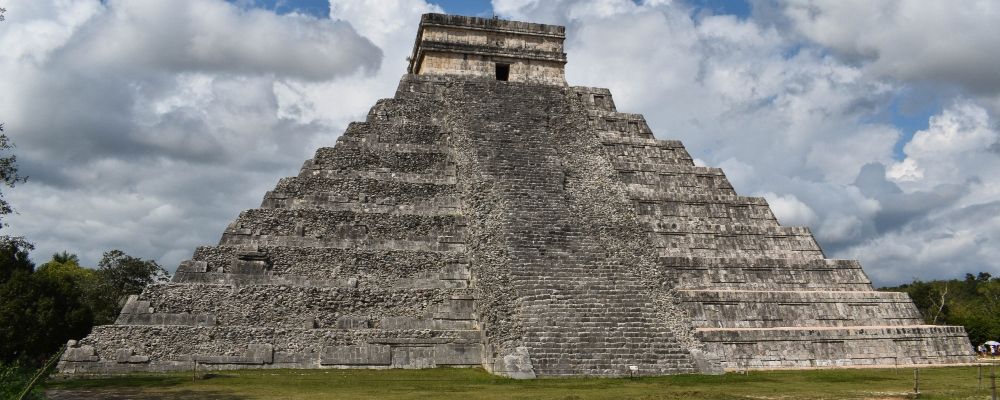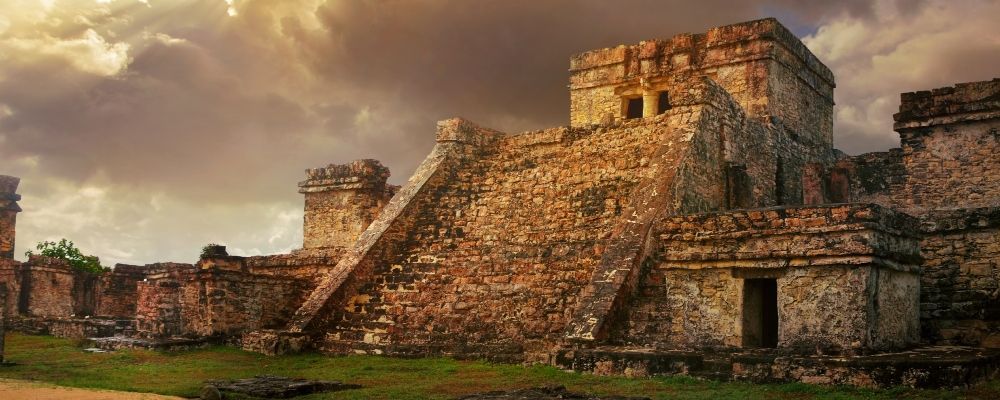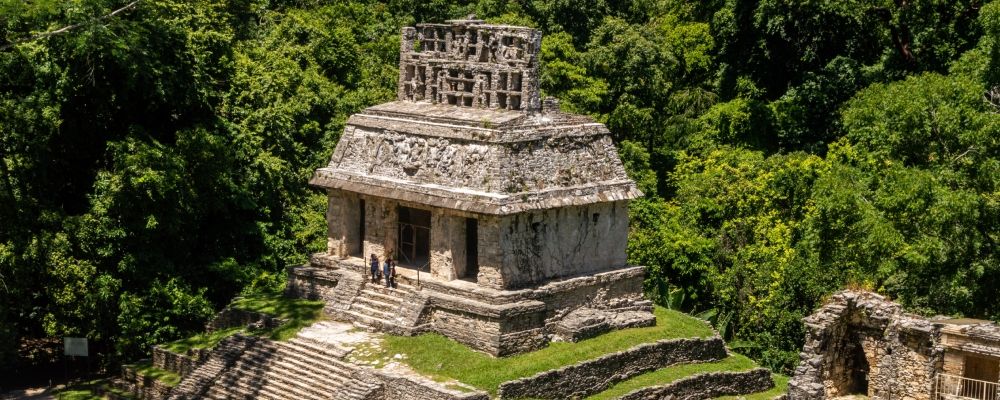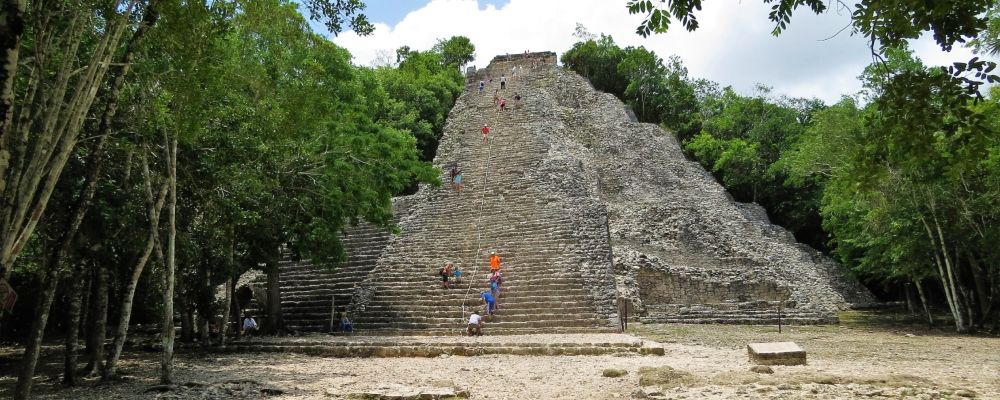The richness of Mexico is in its culture and gastronomy, but above all, in its historic spaces, such as the archaeological sites you can find in different states of the country.
Impressive samples of art, architecture, and tradition represent each one of these places. If you want to learn more about Mexico, you must start planning your visit to one or more archaeological sites.
But where to start? According to the National Institute of Anthropology and History (INAH) in Mexico, there are more than 2,000 archaeological sites, only 187 are open to the public, and nine have been proclaimed World Heritage Sites by UNESCO.
You can't experience the grandeur of each site on your first tour to Cancun or any other state, but you can start by visiting one of the ten most important archaeological sites in Mexico, which we will show you below.
Archaeological zones are the towns, temples, and other pre-colonization structures that have been preserved to ensure that future generations will know the history of these cultures.
Each archaeological zone is evidence of impressive relics of the past, such as buildings, reliefs, paintings, and stories amid all kinds of ecosystems.
Most of these sites once possessed everyday objects such as dishes or ritual tools that today you can find in museums, some of them close to the site. Read on to learn more about these archaeological sites:
Declared a UNESCO World Heritage Site in 1988 and one of the Seven Wonders of the World since 2007, Chichén Itzá is the best example of Mayan culture.
Approximately 200 kilometers from Cancun, three hours by road, and surrounded by green landscapes, you will find the archaeological site of Chichen Itza, famous for being the home of the Temple of Kukulcan or El Castillo.
A 30-meter-high base that every equinox lets you see for at least 30 minutes the figure of the Feathered Serpent sliding down the stairs, thanks to the position of the sun and shadow.
To enjoy such a spectacle, acquire unique handicrafts, visit the community and nearby restaurants, and purchase a tour to Chichen Itza to make your visit easier.

If you travel to the State of Mexico, you cannot miss the archaeological site of Teotihuacan, once known as the "city of the gods."
The site has more than 200 hectares open to the public. You can explore and even climb historical monuments such as the Pyramids of the Sun and the Moon here, in addition to visiting two large museums that exhibit all kinds of articles and paintings typical of the culture.

In Cancun, you can visit one of the biggest shows in the world, the Coco Bongo show, but if you stray a little, you can also end up enjoying the archaeological site of Tulum in Quintana Roo.
Considered one of the best preserved archaeological sites in the country, Tulum is famous for its murals, buildings, and wall that delimits the site.
Located in Riviera Maya, explore El Castillo, the most significant foundation of the area, with an excellent view of the Caribbean Sea and accompanied by all kinds of buildings such as serpentine columns and temples; there is also a Tulum 4x1 tour in which you not only visit this beautiful archaeological site but three other attractions in the area.

From the Mayan "painted walls" or "dyed walls," this archaeological site in the middle of the Chiapas jungle stands out for its pictorial beauty that tells in murals the history of this civilization.
For example, in "Building 1" or "of the Paintings," you can appreciate one of the largest murals in the Mesoamerican world, 16.90 m long by 5 m high, this wall reflects the battle of Chan Muwan II, ruler of Bonampak from 776 A.D. to 800 A.D., approximately.

A pre-Hispanic city located north of Veracruz, Tajin is distinguished by the amplitude of its spaces and the number of its temples. However, it stands out above all for the Pyramid of the Niches, which, as its name says, has 365 niches.
To get there, you must take the road leading to the El Chote community. The entrance fee is around 90 pesos, but with the help of a guide, you can get better prices and a more enriching experience.
Palenque is a pre-Hispanic city, once the seat of important commercial and political treaties. Today you can visit the archaeological zone and witness incredible monuments surrounded by vegetation, such as the Temple of the Inscriptions and the Great Palace.
You can also enjoy, just 7 km from the zone, the magical town of the same name, which stands out for its local gastronomy full of traditional flavors. Taste the Chiapan tamales and pozol, or marvel at the amber jewelry pieces that can only be found there.

If you plan to visit the archaeological site of Tulum, don't miss the opportunity to visit Cobá, a site of great importance for the Mayan culture.
With more than 70 km², the site of Cobá stands out not only for its pyramids, such as Nohoch Muul but also for its cenotes and lagoons, among them Cobá and Makanxoc.
For the Mexica society, the Templo Mayor was the political and religious nucleus of the ancient city of Tenochtitlan. But today, it is easy to find this archaeological site in the Center of Mexico City, right in front of the Zocalo. This temple is dedicated to deities such as Tlaloc, Huitzilopochtli, or Coyolxauhqui, among others.
On this site, you will find relics of ceremonial altars, part of the Great Basement, and a museum dedicated to the exhibition of more than 10 thousand archaeological pieces and temporary exhibitions.
Monte Albán has been a World Heritage Site since 1987, covering more than 20 km² of extension, where traditional buildings such as La Gran Plaza or Juego de Pelota coexist with other modern structures; this is the case of the site's museum, a space full of culture and relics of the Zapotec past.
As a protected natural reserve, the archaeological zone of Calakmul extends for 70 km² and has more than 6,000 structures of what was once a rich Mayan city.
When you visit this site, you will explore every nook and cranny in search of the 120 stelae or monoliths, temples, residences, and pyramids throughout the area.
As well as these areas, many other archaeological sites are capable of astounding you with their history and beauty. Consider scheduling your visit to the itinerary of your next vacation; if you are interested in more places to explore, do not hesitate to check our blog to find out what this country offers.
